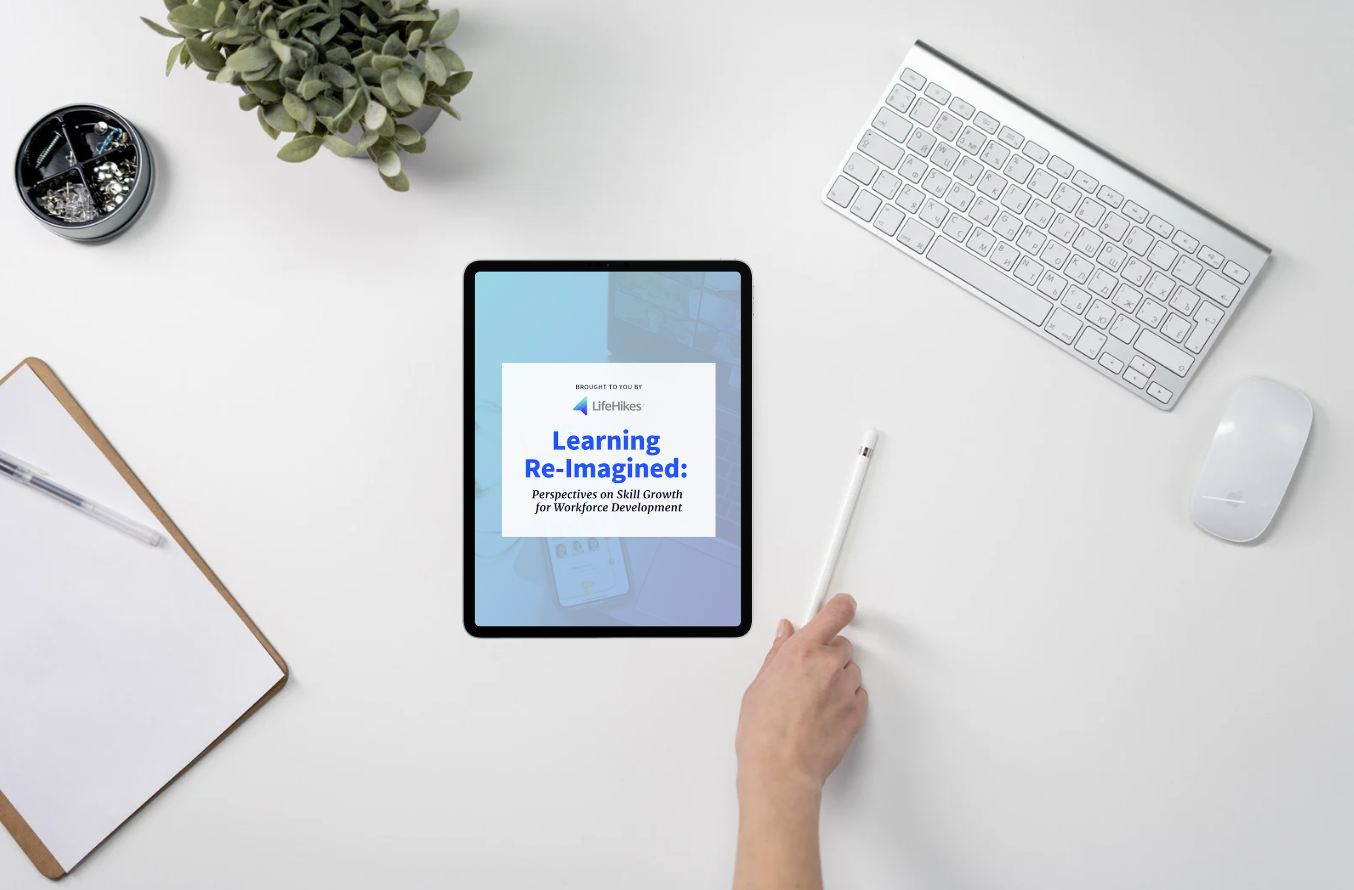The Power Of Connection: Learning In Community
May 15, 2023
There’s a place for every type of learning in the business world. Each modality has its advantages and disadvantages. Four professionals deeply immersed in learning and development (L&D) methodologies identify some distinct advantages to interactive group learning.
While they all agree that the type of training depends on the information or skills to be mastered and on adult learning styles, they all stressed the value and joy of learning in community.
What is the value of live, interactive learning, and what is its place in the broader realm of learning and development?

By Brenda Caine
The Joy Of Human Connection
For Circe Wallace, Executive VP of Action Sports & Olympics, the benefits of interactive learning far exceed the knowledge or skills acquired. For her, learning in a community allows people to build relationships, increases personal accountability, and provides the opportunity to ask questions and learn from others’ experience.
Says Circe, “When you’re in an environment where there is a mentor or group discussion happening in real time, there is a level of accountability required to be engaged in the dialogue that you lose when you’re just doing online static learning.” In her experience, “You can’t just sit there and answer questions or be doing something else. You have to be really present.”
Going into more detail, Circe explains, “Learning needs to be in real time. You need to be present with your camera on. You should be doing breakout sessions or having dialogue with your peers or your teachers. This allows for a much stickier experience.” She goes on to add, “It also just feels good when you participate actively. That’s not just something coming at you, you’re able to interact in a way that I think just allows for a better educational experience.”
The joy of this type of learning is also in the connections that are made. She explains, “I see beautiful friendships and connections develop. This adds a layer of human connectivity that I think is important in human experience. I think learning environments are the most successful and the most fun when you’re able to have a human experience. There’s conversational opportunity and an opportunity to build community.”
Active Engagement Enhances Learning
While Mark Lewis, Sr. Director Learning and Talent Management, Delek US Holdings, believes the ideal is a flexible approach to learning that takes into account both the skills to be learned and the varied adult learning styles, he sees the limitations of passive learning methods.
Explains Mark, “Ideally, I should have some things that are in person for the folks that learn better in person. I can use a more traditional modality for those people that say, “’Just give me the videos and let me do it all myself.’”
Clearly, there are situations where interactive training is the preferred method.
Taking it from a more practical perspective, he adds, “Did you sit through a stack of PowerPoint slides to learn how to ride a bike? We shouldn’t fool ourselves by thinking that is the most engaging and effective way that we can train our employees. You don’t really know what’s happening in people’s brains while they’re sitting there watching PowerPoint slides.”
“Did you sit through a stack of PowerPoint slides to learn how to ride a bike? We shouldn't fool ourselves by thinking that is the most engaging and effective way that we can train our employees.”
He also notes the seemingly ever decreasing attention spans of people. He observes, “Our people weren’t paying attention when the cameras were off. We have looked at that and decided that we’re going to move, for the most part, to in-person classroom training to improve engagement and to get more participation.”
Group Learning Complements Individual Learning
Taking a similar perspective is Michael Davis, Principal at Mind Share Partners. For him, learning needs to be individualized for each employee’s needs, and then reinforced with peers in group learning. It’s not either/or, it’s both.
The individual training, for Michael, should be based on “just-in-time in the zone of proximal development,” that is, in the flow of work.
But people don’t work in isolation. They are part of a broader organization. Michael emphasizes the importance of relationships. “It’s more fun when folks are given an opportunity to practice the skills themselves while, at the same time, learning within community. He adds, “Joy is an important piece of learning. When you’re doing it alongside other people, and it’s fun and joyful and interactive and contextualized. We are social animals and learning happens through relationship.”
The Secret Sauce: Doing It Together
Like the other L&D professional with whom we spoke, Ed Arcinue sees the limitations of passive learning methods. As Chief Sales Officer of LifeHikes and in past leadership positions with other major corporations like Microsoft, Creative Artists Agency (CAA) and LegalZoom, Ed brings a wealth of corporate training experience to the table. Commenting on traditional corporate training, he says, ”You look around, and everyone is yawning….There’s just a lack of engagement in that traditional model of lecturing or showing slides or other non-interactive modalities.”
When he was with CAA and LegalZoom, he participated in LifeHikes interactive training programs both onsite and offsite. For him, “The secret sauce of it is you do it together. We learn together, and then we do it together again. And every time you do that, you see that incremental improvement. It’s rooted in positive feedback.” He goes on to say, “You see people opening up, taking more courageous steps. They’re finding fun in stretching themselves. There’s general excitement about both what they have learned and just the joy of going through it with peers.”
“You see people opening up, taking more courageous steps. They're finding fun in stretching themselves. There's general excitement about both what they have learned and just the joy of going through it with peers.”
Ed adds this observation: “Everybody’s commodity is time. If you can compress learning into a time where it doesn’t even feel like you’re passing the time, and people are enjoying themselves and seeing that as a benefit, the ripple effects are enormous throughout the organization.”
We Need The Human Connection
There’s general agreement, people learn best when the experience is engaging and fun, and when they can learn from each other. We should never underestimate the power of joy in learning together.
Our four L&D leaders share more of their insights, their optimism, and their excitement about the future of learning in our LifeHikes e-book.


